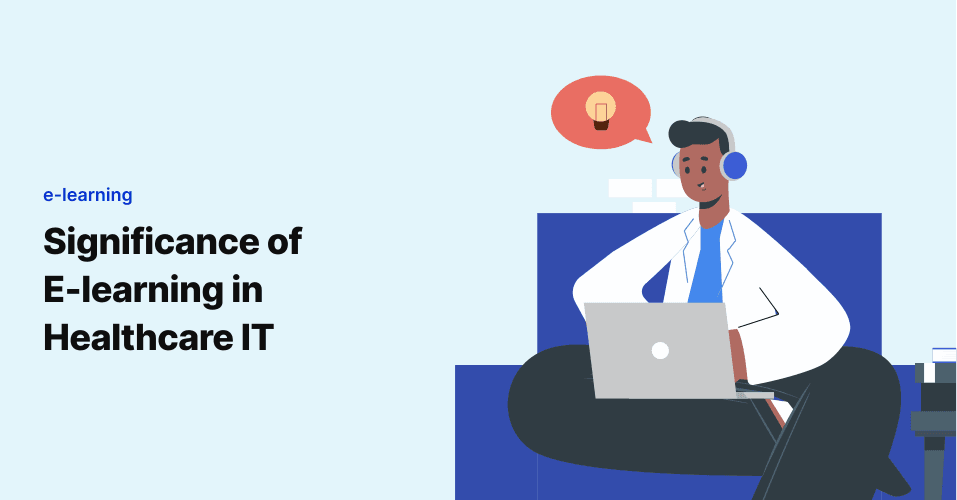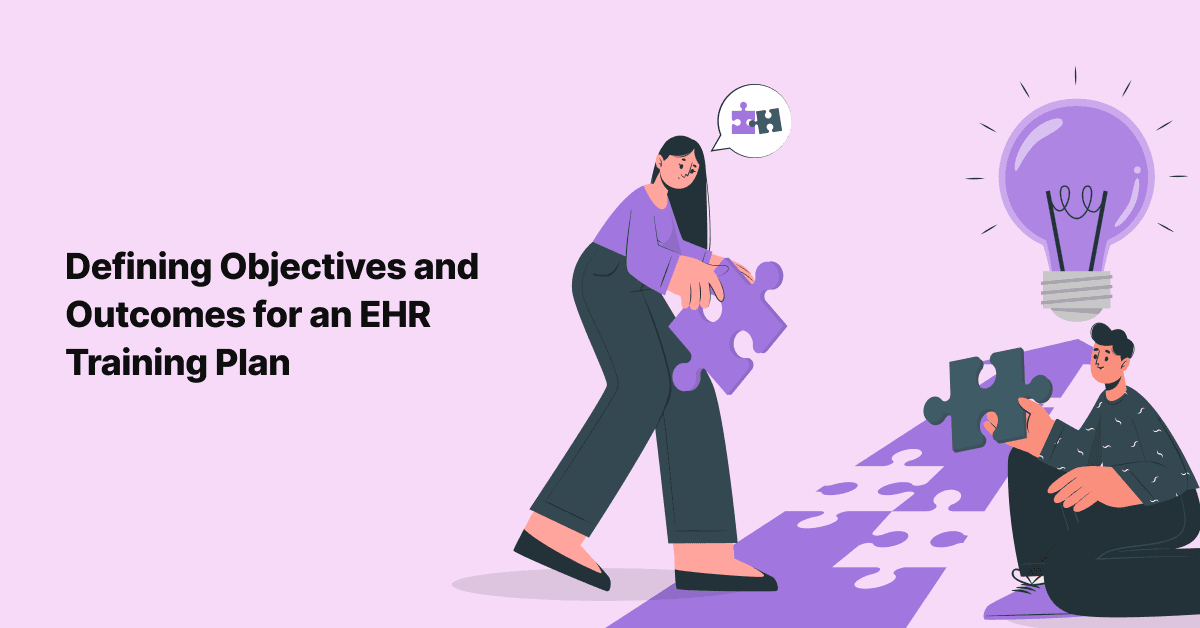
The Importance of Brevity in E-learning for Healthcare IT
Short and sweet. That’s the focus of today’s discussion around e-learning for Healthcare IT, and it’s an …

In healthcare, your EHR system is your compass, guiding high-stakes decisions. EHR training acts as your cartographer. Like explorers needing maps to conquer new frontiers, your healthcare team requires a meticulous EHR training plan with clear objectives. It’s vital for successful implementation, ensuring your organization thrives.
In this blog post, we’ll delve into defining these objectives—a strategic cornerstone. It’s akin to mapping a safe, efficient route through uncharted territory, crucial for healthcare’s intricate landscape.
What this blog covers:
Learning objectives are concise, specific statements that outline what your healthcare team should know or be able to do after completing EHR training. They act as a roadmap, providing clear direction for both trainers and trainees. Without learning objectives, EHR training can become aimless, and learners might not grasp the critical skills needed for effective EHR use.
Learning objectives serve as a compass, guiding your healthcare team through the complex landscape of EHR implementation. They break down the extensive EHR system into manageable, digestible components.
By following a well-structured set of objectives, your team can gradually build the knowledge and skills required for each aspect of EHR use. This step-by-step approach not only reduces overwhelm but also ensures that no critical area is left unaddressed.
Clear and well-defined learning objectives are directly linked to improved patient care. When your healthcare professionals understand the EHR system thoroughly, they can use it more effectively and efficiently. This leads to accurate patient data management, faster decision-making, reduced errors, and, ultimately, better patient outcomes. Patients benefit from timely and accurate diagnoses, treatment plans, and care coordination. Therefore, the clarity of learning objectives directly influences the quality of healthcare delivery.
To define precise learning objectives, engage in a collaborative effort with key stakeholders such as EHR team leaders, clinicians, and department heads. Start by outlining the overarching goals of your EHR implementation:
Once these objectives are clear, work backward to identify the specific skills, knowledge, and tasks that your healthcare team needs to master to meet these goals. By involving those who will use the EHR system daily, you ensure that learning objectives are not only comprehensive but also practical and aligned with the unique needs of your organization. This collaborative approach fosters buy-in and enthusiasm among your team, setting the stage for a successful EHR training program.
Crafting clear and concise learning objectives is both an art and a science. It involves distilling complex EHR concepts into simple, comprehensible statements. Here’s how to master this art:
Avoid vague terms and phrases. Instead, be precise about what learners should achieve. For example, rather than stating, “Understand EHR navigation,” you could say, “Navigate the EHR system to access patient records, enter data, and generate reports.”
Learning objectives should emphasize what learners will do, not just what they’ll know. Action verbs like “demonstrate,” “perform,” or “analyze” indicate the expected behavior.
Each objective should address a single skill or concept. Keep them concise to maintain clarity.
Learning objectives should be measurable to track progress and determine when they’ve been met. Here are some tips to ensure your objectives are both measurable and actionable:
Whenever possible, use quantifiable metrics. For instance, instead of saying, “Understand patient data entry,” say, “Accurately enter patient data for a minimum of 10 mock cases.”
Describe how learners will demonstrate their proficiency. Will they complete a task within a certain time frame, achieve a specific accuracy rate, or produce error-free documentation?
Objectives should challenge learners but remain achievable. Avoid setting objectives that are too ambitious or unrealistic. For e.g.,
Objective: Within one week, healthcare providers should be able to complete patient intake procedures in the new EHR system accurately.
Rationale: This objective challenges learners to master an essential EHR task, patient intake, which is fundamental for accurate healthcare records. The one-week timeframe is ambitious but reasonable, providing a sense of urgency without overwhelming learners. This balance ensures that healthcare providers strive to achieve proficiency but aren’t discouraged by unattainable goals.
Effective EHR training objectives must align seamlessly with your organization’s broader EHR goals. To achieve this alignment:
Begin by revisiting your organization’s EHR implementation goals. These might include improving patient care, reducing documentation errors, enhancing data security, or increasing workflow efficiency.
For each organizational goal, identify the specific learning objectives that contribute to its achievement. Ensure that there’s a clear connection between what learners will acquire through training and how it will impact the organization’s EHR success.
As your organization’s EHR strategy evolves, periodically revisit and adjust your learning objectives to stay in sync with changing priorities and technologies.
Crafting clear and effective learning objectives is an essential step in developing an EHR training plan that drives success. These objectives act as a guiding light for both trainers and learners, ensuring that training efforts are focused, measurable, and directly contribute to the achievement of organizational goals.
Remember - defining clear objectives is just the beginning. A structured approach to EHR training is essential to ensure these objectives translate into real-world success. If you’re looking for a roadmap to designing an effective Epic training program, check out How to Approach Epic Software Training and Succeed.
Implementing an EHR system marks the beginning, not the end, of your healthcare organization’s journey. To ensure ongoing proficiency and maximize the benefits of your EHR training plan:
Integrate these strategies into your post-implementation training schedule, aligning them with the objectives and outcomes outlined in your EHR Training Plan. Emphasize that proficiency in your EHR system is an ongoing journey, not just a one-time event, underscoring the plan’s pivotal role in this journey.
Join over 3,200 subscribers and keep up-to-date with the latest innovations & best practices in Healthcare IT.

Short and sweet. That’s the focus of today’s discussion around e-learning for Healthcare IT, and it’s an …

We’ve previously shared some tips for delivering the best Epic training in the healthcare IT space, but as the …

The healthcare industry has been challenged to a great extent due to the global health crisis caused by …